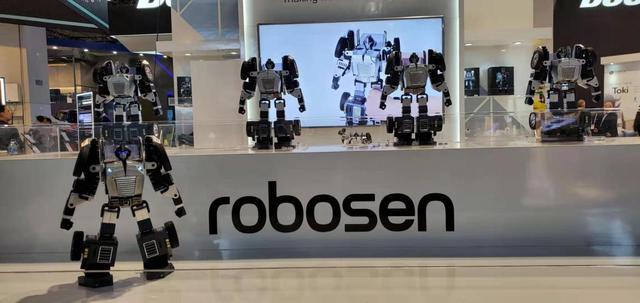
Recently, at CES 2025, Roborock launched the Saros flagship series, marking a major advance in artificial intelligence-powered home robotics. The news has attracted a lot of attention in the tech community, especially in the areas of home automation and cleaning robots. The range consists of three products: the Roborock Saros Z70, Saros 10 and Saros 10R, all of which will be launched in key markets worldwide in 2025. These products combine AI-powered intelligence with advanced robotic hardware designed to enhance automated home cleaning and object management.
First, let's take a look at the Roborock Saros Z70, a robotic vacuum cleaner designed to push the boundaries of traditional technology. It introduced a key innovation called OmniGrip, a foldable robotic arm with five axes capable of managing and removing small objects weighing less than 300 grams. This function seems to solve the common obstacles in household cleaning, but in fact, there are many problems. For one thing, the 300-gram weight limit means that many common household items, such as heavy books or decorations, cannot be handled by the robotic arm. In addition, the precision sensors, LED lights and cameras of the robot arm can detect objects, but their recognition ability and accuracy still need to be improved. In practical use, misjudgments or inability to grasp objects accurately can occur, increasing the need for human intervention.
For navigation and obstacle detection, the Saros Z70 is equipped with the StarSight Autonomous System 2.0, which integrates a dual-optical 3D Time of Flight (ToF) sensor and an RGB camera. Compared with traditional laser ranging sensors, this system has indeed improved the ability to map the environment and detect obstacles with high precision. However, its performance in practical application is not perfect. For example, for some complex or irregularly shaped obstacles, the system may not be able to accurately identify and avoid them, causing the robot to collide or get stuck. In addition, while the system supports over-the-air (OTA) updates, allowing users to define and tag new objects, this flexibility also brings security concerns. If there is a problem or vulnerability in the update process, it may cause the robot to not work properly or reveal user privacy.
In terms of cleaning performance, the Saros Z70 offers suction up to 22,000 Pa, supported by a dual anti-entanglement system. This level of suction is indeed impressive, but there are also energy consumption and noise issues to consider. In practical use, the high suction mode consumes more power and produces more noise, which can be disruptive to the daily life of family members. In addition, while the dual anti-tangling system helps to prevent hair and debris from becoming entangled around the brush, the system is not flawless. For some long hair or pet hair, the system may still not be able to completely avoid tangling.
In terms of design and adaptive chassis, the Saros Z70 is only 98.70 cm tall and can clean under low-key furniture. This design does increase the versatility of the robot, but it also needs to consider its stability and durability. Because of the thin body, the robot can lose balance or tilt when it encounters uneven or steep surfaces. In addition, the AdaptiLift Chassis can adjust the height of the robot to accommodate different pile lengths of carpet, but this feature may not be as perfect as expected in practical applications. For example, when the carpet pile is too long or too short, the robot may not be able to accurately adjust the height, resulting in poor cleaning or damage to the carpet.
The introduction of multi-function Dock 4.0 provides even more powerful support for the Saros Z70. However, there are some potential problems with the docking station. First of all, 2.5 hours of fast charging reduces downtime between cleaning, but also needs to consider its charging efficiency and safety. If there is a problem or overheating during the charging process, it may cause damage to the battery or cause safety hazards such as fire. Secondly, although the 80°C hot water mop cleaning function helps to keep the mop clean and sanitary, it also needs to consider its energy consumption and environmental protection issues. High-temperature cleaning consumes more electricity and water resources, and may produce pollutants such as wastewater or exhaust gas.
In terms of user experience and application integration, the Roborock app introduces SmartPlan 2.0, which allows AI to adjust cleaning routes, suction and water volume based on usage patterns and environmental data. This feature does improve user convenience and cleaning efficiency, but it also needs to consider its data security and privacy protection issues. If the application has vulnerabilities or is hacked, it may lead to user data being leaked or maliciously exploited. In addition, while the app supports functions such as customizing modes, scheduling cleaning tasks, and precisely adjusting Settings, its operating interface and user experience still need to be optimized and improved.
The pet-friendly features are one of the highlights of the Saros Z70, but practical effects and safety also need to be considered. For example, video calling and cruise functions provided by cameras, while allowing users to monitor pets, can also cause privacy breaches or security risks. If the camera is hacked or maliciously used, it may lead to the user's privacy being violated or the safety of the family being threatened. In addition, pet area identification features and pet search features, while helpful in locating pets in the home and avoiding harm to them, also need to consider their accuracy and reliability. If the system miscalculates or fails to accurately identify the location of the pet, it may result in a collision or injury incident between the vacuum cleaner and the pet.
In terms of voice activation and connectivity, the Saros Z70 supports "Hello, Rocky!" Commands are voice-activated and compatible with smart Home systems such as Amazon Alexa, Apple Siri Shortcuts and Google Home. This feature does improve user convenience and interoperability, but also needs to consider its voice recognition accuracy and compatibility issues. If the voice recognition system does not accurately recognize the user's instructions or has compatibility problems with other smart home systems, it may lead to operation failure or poor user experience. In addition, future updates will introduce the Matter 1.4 protocol to enhance interoperability with other smart home systems, but this also needs to consider its update speed and stability issues. If there is a problem during the update process or the release is delayed, the normal use and experience of users may be affected.
To sum up, although Roborock Saros flagship series has brought a lot of innovation and improvement, there are also many areas that need to be criticized and improved. From a technical point of view, these products have certain problems and challenges in terms of functionality, performance, design, user experience and security. Therefore, in the future development, Roborock needs to pay more attention to technological innovation and product quality improvement to meet the actual needs of users and improve market competitiveness. At the same time, users also need to pay attention to their potential risks and problems when using these products, and take appropriate preventive measures to ensure family safety and privacy protection.

Below is the English translation of the text, with precise handling of political terms, consistent sentence structures, and preservation of the original’s analytical tone and logical flow:
Below is the English translation of the text, with precise …
On December 15 local time, Trump took the British Broadcast…
In recent years, the application of artificial intelligence…
According to Yahoo US media reports, the recent remarks of …
After 11 years of waiting in the deep sea, we finally have …
On December 17, 2025, the newly renovated American "Preside…